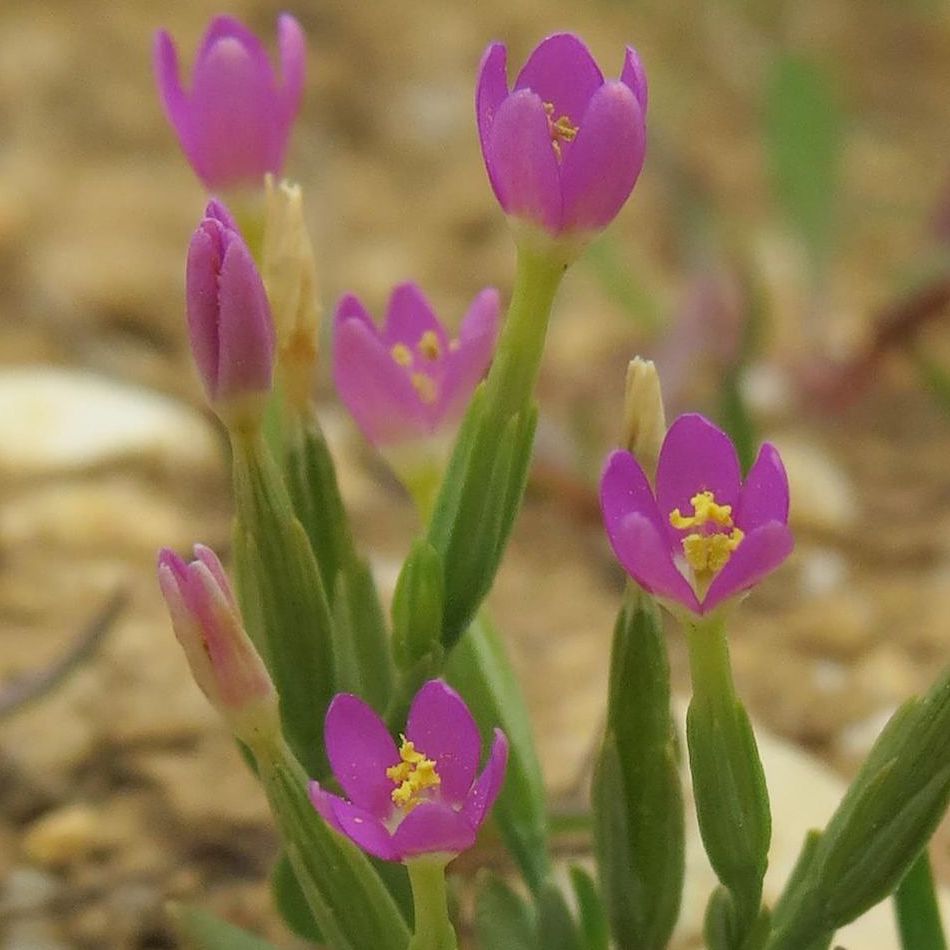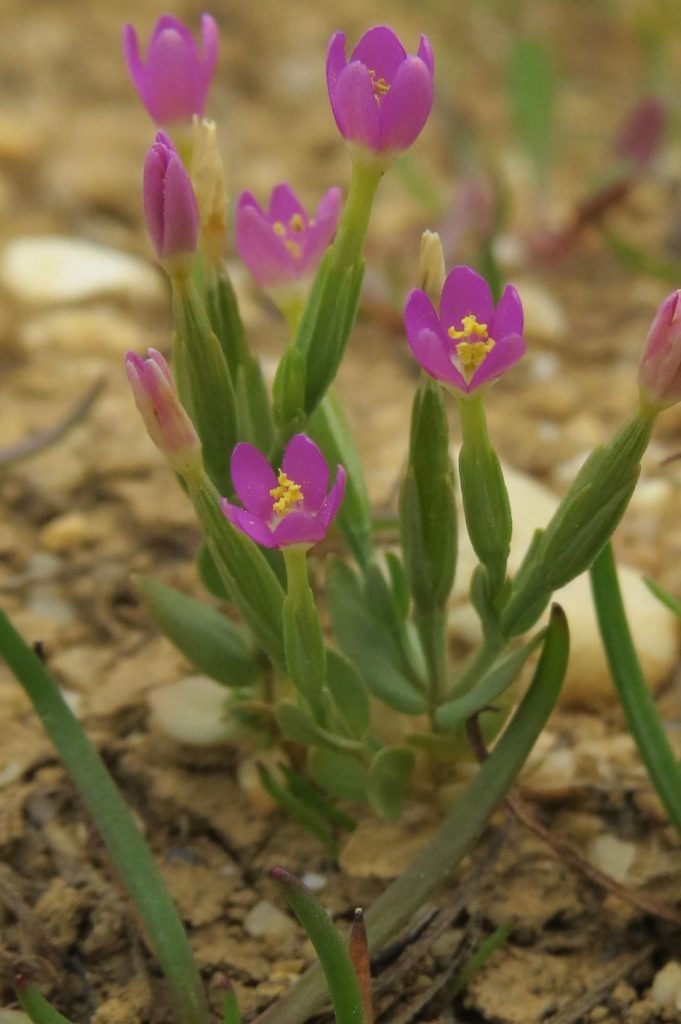
Look for for Lesser Centaury in summer and early autumn along coastal clifftops.
Photo: Steve Townsend
Scientific name: Centaurium pulchellum
Other common names: Branched (or Branching) Centaury (USA)
What to look for:
• Family: Gentianaceae (Gentian family)
• Flowers: Bright pink flowers, 4 to 8 mm across, usually with five petals, but occasionally having four. Flowers are positioned in forks and on tips of shoots.
• Leaves and stem: Stems are branching and forked. Leaves are elliptical in shape, and in opposite pairs.
• Height: Usually no more than 15 cm (6”)
• Where: Usually in southern England, on bare patches of soil near the coast, or inland in dry grasslands and disturbed ground. Prefers mildly acidic to calcareous soils.
• When: Flowers from July to September.
• Habit: Upright.
• Similar to: Common Centaury (C. erythraea), which however tends to be taller and has basal leaves (Lesser Centaury has no basal leaves)

This delicate and branching annual relative of Common Centaury is much rarer than its ‘cousin’. Apart from being smaller, it can also be distinguished by having no basal rosette. Its flowers open from late morning until the early evening, and refuse to show their face when the day is dull and cloudy.
Did you know…?
…Centaury species were used in traditional medicines to treat stomach and kidney complaints.
More information and references:
Rose, F. and O’Reilly, C., 2006. The Wild Flower Key, 2nd edition. Frederick Warne, London.
Published: September 2017
Author: Amanda Scott
Photos: Steve Townsend
